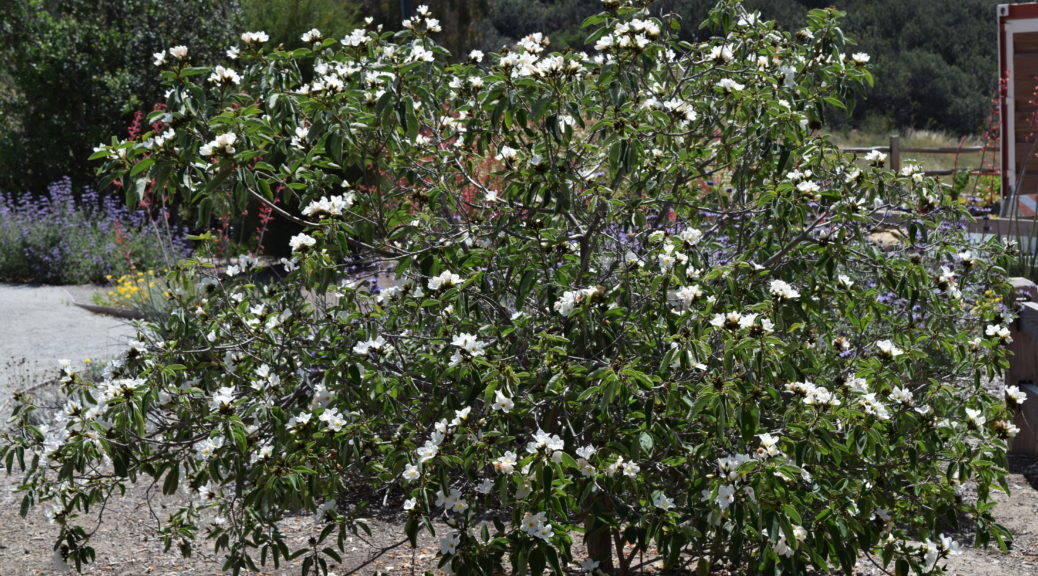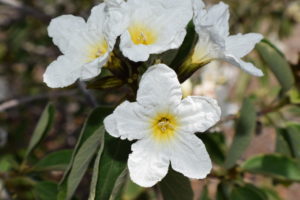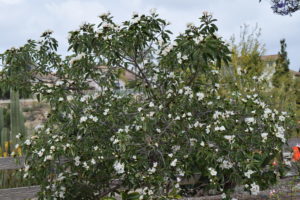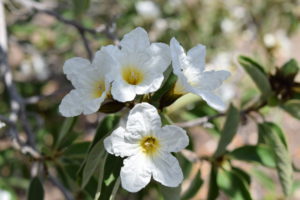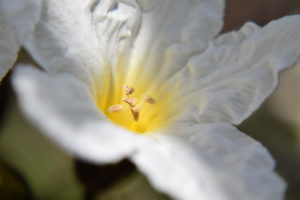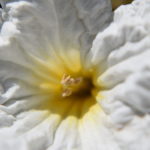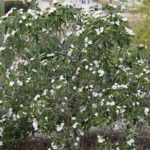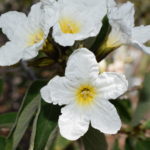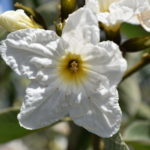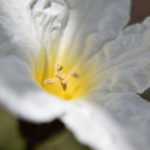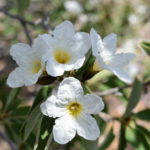This is an attractive small tree with very beautiful flowers. The foliage and bark are drought tolerant and handles windy and coastal conditions. It is a bit messy for a patio or near the pool but breathtaking elsewhere in the garden. Birds eat the fruit and the flowers attract butterflies and hummingbirds. Though the fruit are sweet, they are considered slightly toxic to humans when fresh. Indigenous people make jellies and dyes from the fruit and use the wood for firewood and light carpentry. This plant has a native range that extends from Rio Grande valley of southern Texas south to San Luis Potosi in Mexico.
This large shrub can be trained up as a small tree with attractive bark and a rounded shape to 12 feet in height, 8-10 feet in width in zones 8-24. The leaves on the Mexican Olive have thick long ovate leaves that are soft lightly fuzzy texture to the touch but harden with age and are gray-green above and pale below.
The flowers bloom year round but in peak season blooms are during spring into summer.
Flowers are often present nearly year-round usually in clusters of 2 inch wide funnel-shaped white flowers with yellow throats and petals that have a crepe paper texture. These are followed by yellow-green olive-like fruit that slightly resemble an olive. Plant in full sun in a well-drained soil with occasional to very little water; tip frost damage will occur down to the mid 20’s°.
(hover mouse over each picture)
Scientific name: Cordia boissieri
Common name: Mexican Olive, Texas Olive, Anacahuita, Anacahuite, White Cordia
Family name: Boraginaceae (Borage Family)
Origin: Rio Grande Valley of Texas south to San Luis Potosi in Mexico
Plant type: Tree or Shrub
Leaf cover: evergreen and Semi-evergreen
Density: medium- high
Texture: soft-light fuzzy
Height ft. 15′ Width ft. 10′ – 12′
Form: symmetrical Growth Rate: slow
Leaf Type: broadleaf Leaf Arrangement: alternate
Leaf Shape: Ovate Leaf Size: 2-3 inches
Leaflet Size: Leaf Margin: entire
Leaf Tip: acute – obtuse Leaf Base:
Leaf Surface: Scabrous, Tomentose
Leaf Color: gray green
Leaf Fragrance: none Flower Sex: Hermaphroditic
Flower Showy: showy Flower Grouping: 3-8
Flower Cluster Type: wide funnel Flower Size: 2”
Flower Cluster Size: 8-10″ Flower Season: year round
Cut Flower: no Flower Fragrance: none
Flower Color: white Fruit Type: Drupe
Fruit Size: 1/2″ – 1″ Fruit Edible: no
Fruit Color: purple to reddish-brown
Fruit Showy: no
Fruit Season: Bark Type:
Bark Color: brown Root Type: moderate
Wood Strength: moderate Branching: upright
USES: alkali tolerant, flower effect, foliage effect, hillside, low maintenance, rock garden, container garden.
Soil Texture: clay Soil pH: alkaline
Soil Moisture: dry to moist Sun Exposure: full sun
Hardiness: Hardy 8-24
Climate: heat, drought, aridity, smog, wind, salt/sea spray
Water: low water needs Fertilizer: usually not needed
Pruning: prune for strong structure
Propagation: seeds or cuttings
Comments: no known pests

